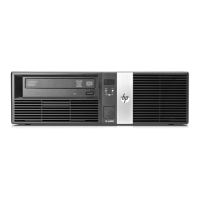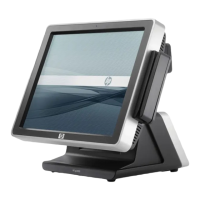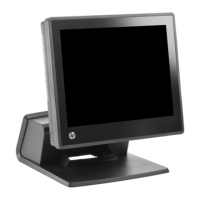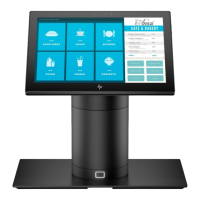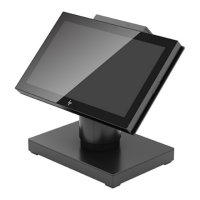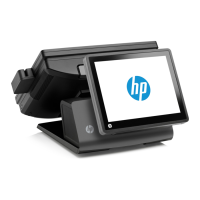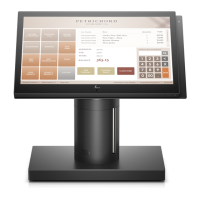Designing
and
Using
I?orms
One approach
to
generating
a form
structure
through
the
keyboard
is
to load two of
the
user
keys
with
the
<SO)
and
<5
I)
codes (control-N
and
control-O, respectively,
with
display functions mode enabled), define both
as
Local keys,
define
their
labels
as
"line
Drs","
and
"8s!!le
set",
respectively,
and
enable
them
by pressing
1lIiI.
Then
draw
the
form
structure
and
alphanumeric
annotations
using
the
Base
set
as
illustrated
in
figure
~4.
As
the
form
is
evolving, use
the
cursor control keys
and
the
two
user
keys
to switch
the
linear
structure
portions of
the
form to
the
Line Drawing
character
set. When doing this, however, be
sure
that
those portions of
the
form
that
will be used for
data
fields
are
set
to
the
Base
set
(figure 5-5 shows
three
lines of
the
sample forin
and
the
various points
at
which
you would use
the
<SO)
and
<5
I)
codes).
You
may
also,
if
you wish, load some of
the
more repetitive line definitions
(such
as
the
second
and
third
lines
in
figure 5-5)
into
user
keys to speed
up
the
drawing
of
the
main
body of
the
form.
DEFINING FIELDS
When format mode
is
enabled, all of display memory
is
"protected" except those portions which
have
been
ex-
plicitly defined
as
"unprotected"or "transmit-only" fields.
Protected Data
The
terminal
operator
cannot
alter
or delete
any
charac-
ters
that
lie
within
a protected area. Protected
characters
are
NOT
transmitted
to
the
host computer. The line seg-
ments
and
annotations
that
constitute
the
form's
structure
are
typically designated
as
protected data.
Unprotected Fields
The operator
enters
data
into unprotected fields. When
the
operator presses
II,
the
data
in
unprotected fields is
transmitted
to
the
host computer. When a
character
is
entered into
the
final position of
an
unprotected field,
the
cursor automatically advances to
the
start
of
the
next
unprotected field. The operator
may
use
the
..
and
_ keys to move
the
cursor to
the
start
of
the
previous or
next
unprotected field, respectively.
I---j----J---.
II
~::;
o
I I I
II
=;5
55
55
55
01 01
01 01
.--+---t---------1Ift--1
--
5
I]
S
A5CII
(50)
code
o
Transmit-Only Fields
The
operator
may
use
the
cursor control keys
to
move
thee
cursor to a
transmit-only
field
and
then
alter
or delete
characters
within
the
field. Note
that
the
cursor NEVER
automatically moves
to
a
transmit-only
field (the
..
and
_ keys skip over
any
transmit-only
fields). When
the
operator presses
II,
the
data
in
transmit-only
fields
is
transmitted
to
the
host
computer. When a
character
is
entered
into
the
final position
of
a
transmit-only
field,
the
cursor automatically advances to
the
start
of
the
next
unprotected field.
Field Attributes
When defining
an
unprotected or
transmit-only
field, you
must
specify a field type (which
has
a
set
of implied
at-
tributes)
and
some explicit field
attributes.
Some of
the
attributes
are
checked
as
each
data
character
is
entered
into
the
field,
others
are
checked
when
the
cursor is
ready
to
leave
the
field,
and
still
others
are
checked when
the
data
in
the
form
is
to be
transmitted
to
the
host computer.
The implicit
attributes
are:
1. The
set
of
characters
which
may
be
entered
into
the
field.
2. The format restrictions,
if
any, for
data
items
entered
into
the
field.
3. Automatic editing,
if
any,
that
is
performed when
the
(
cursor leaves
the
field.
Table 5-1 summarizes
the
implicit
attributes
associated
with
each field type.
The
explicit
attributes
are:
1.
Whether or
not
the
terminal
operator MUST
enter
a
data
item
into
the
field
(REGU
I REDIOPTI ONAl).
2.
Whether
or
not
the
data
entry
in
the
field
is
to be
automatically justified
when
the
cursor leaves
the
field
(JUSTIFY/NO
JUSTIFY).
3.
Whether or
not
every
character
position
in
the
field
must
be filled by
the
terminal
operator (TOTAL F I
ll/NO
TOTAL
FIll).
'--+---4+11·
.----It-.-.---.--
II
II
I I I I
~3S
~35
55
SS~3S~3~;
01
01
01
01010101
t+-----·+t--·--·-----·-t--t--H-1
5
I
ASCII
<.'31)
code
(
Figure 5-5. Use of Shift-In
and
Shift-Out Codes
5-4
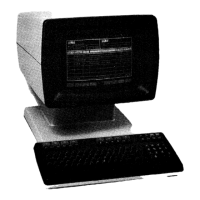
